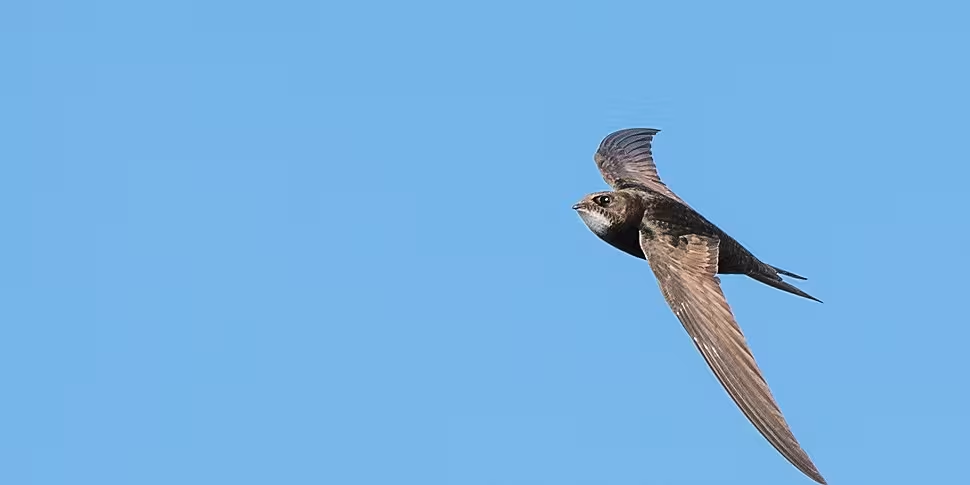For thousands of years, the screech of the swift has been a sure sign in Europe that summer has arrived.
As the weather in the northern hemisphere warms, these little black and white birds leave Africa for our shores to mate and raise a family.
Darting through our skies at speeds only surpassed by peregrine falcons, swifts spends 10 months of the year on the wing and their feet only touch terra firma to nest.
Sadly, each year fewer and fewer make the journey to Ireland; since 2007, the Irish swift population has dropped by a catastrophic 40% and the species is now officially Red Listed - meaning it is at risk of extinction.
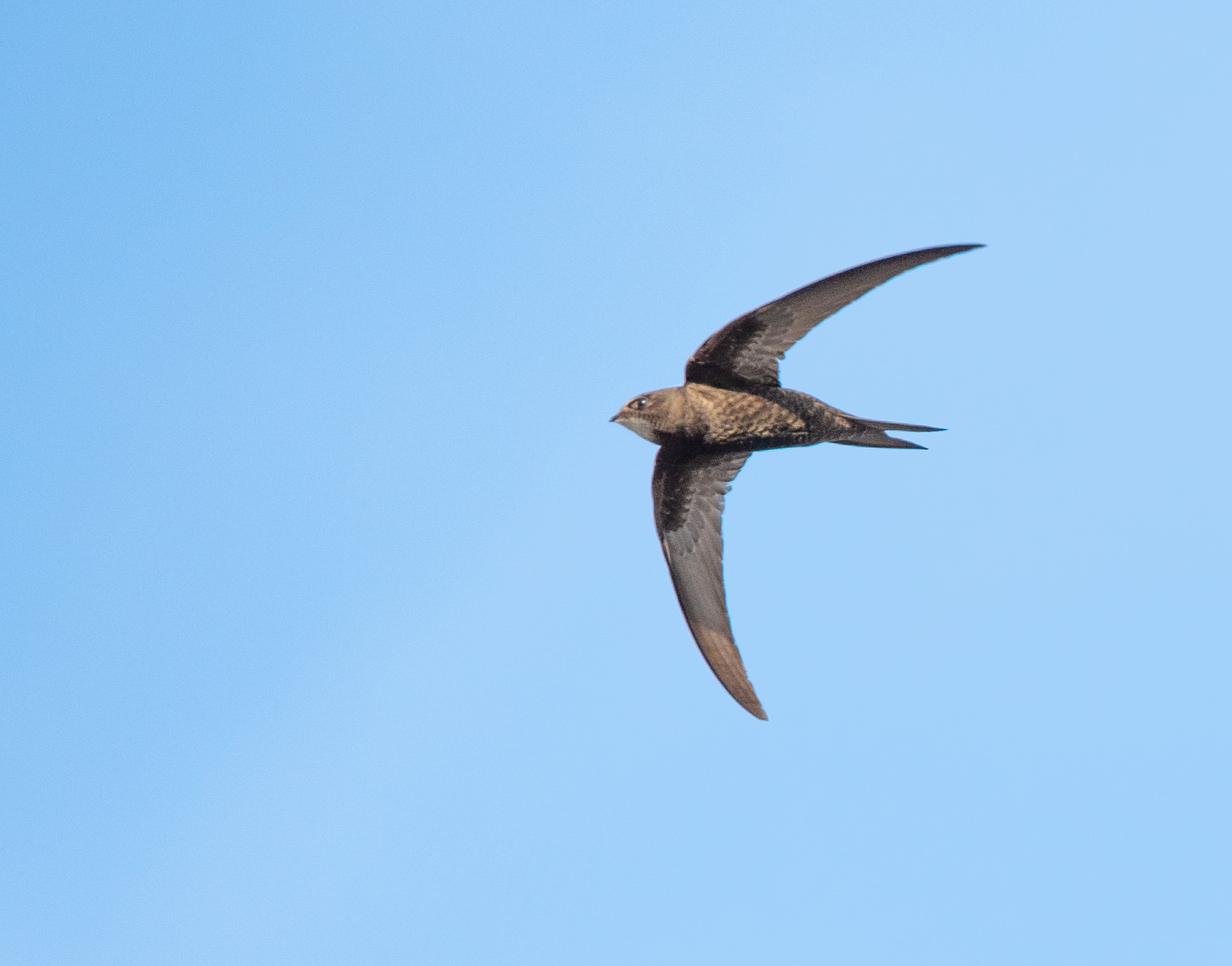
The reasons for the swift’s decline are complex and varying; extreme weather events caused by climate change is one, while the decline of the insect population is another.
However, experts believe the most important is loss of habitat; swifts love to nest in the crooks and crannies of old buildings and, increasingly, these are being renovated and sealed up.
An newly airtight building might be a cosier place to live in - but to a swift it means it cannot return to the only nest it knows.
A helping hand
The imposing Museum Building in Trinity College is one of the finest specimens of Victorian architecture in Dublin.
Inspired by the Byzantine architecture of Venice, it has housed the university’s Geology Department for 160 years and for decades a colony of swifts has called it home as well.
But when one year the building was ensnared with scaffolding, the swifts were prevented from nesting and the entire colony was thrown into chaos.
Recent PhD graduate Jamie Rohu has a reputation as a keen birder within the College and has taken up the informal mantle of the colony’s protector.
Every May, he ascends the Museum Building’s Hogwarts-esque staircase, flicks on a recording of a swift cry and waits for the birds to arrive home from Africa.
“We are basically trying to re-establish the colony that used to exist here in the past,” he told Newstalk.
“So, we don’t know how many birds we had in the past but it was a sizable colony here stretching back before the 1970s or even earlier than that.”
#swifts in a rush!
Had a wonderful morning surveying with @Aqua_Dan1 and Luke Lambert from @BirdWatchIE at @tcddublin
Hopefully next year the public can come onto campus and see (and hear!) this natural spectacle for themselves @DubCityCouncil pic.twitter.com/fzIhEJQ9PB— Jamie Rohu 🌱 (@JamieRohu) July 13, 2021
Swifts like to raise their chicks close to each other, so the aim of the recording is to entice the birds where they will, hopefully, realise what perfect place the Museum Building is to nest.
“These holes here in the cornicing of the Museum Building, they are air vents,” Mr Rohu said.
“They are ideal habitat for swifts because they are protected from the elements; they’re also protected from predators - so, there’s no rats that can get in there, there’s no sparrowhawks that can get in there in.
“So, the chicks, when they do hatch, they’re safe and protected in these holes.”
Mr Rohu’s story is not unique; all across Ireland a small but passionate number of conservationists are working to arrest the decline of the swift in their local areas.
Lynda Huxley of Swift Conservation Ireland first got involved when her employers at the Galway Mayo Institute of Technology asked for ideas on improving the campus’s biodiversity.
So-called ‘swift bricks’ can be built into new homes or swift nest boxes can be attached to existing dwellings.
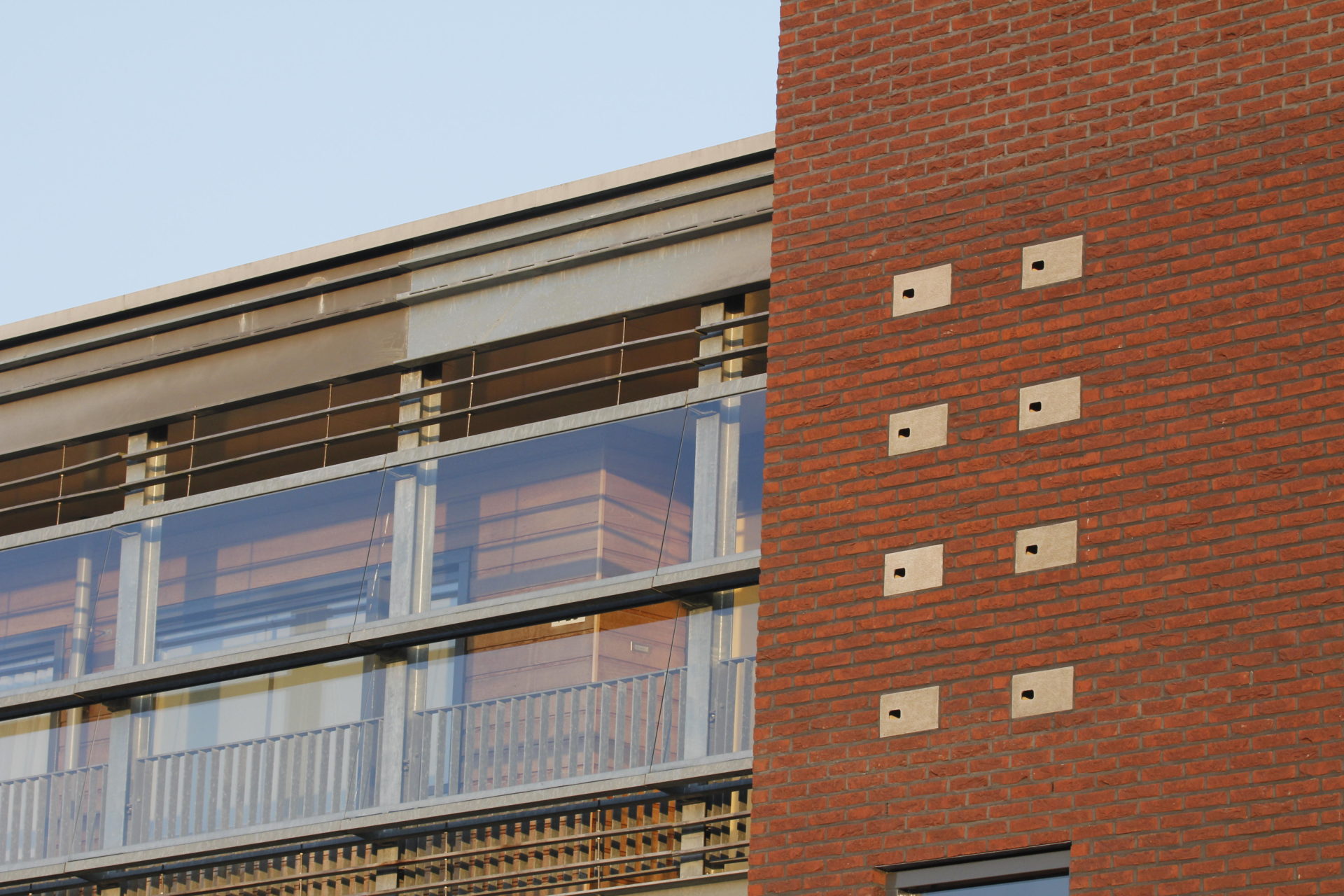 Nest boxes for the common swift get a prominent place in a new apartment building.
Nest boxes for the common swift get a prominent place in a new apartment building.“I’d heard about work being done in Northern Ireland and so I sought some advice from them and set up my first nest box project for swifts at the [campus] in Mayo,” Ms Huxley explained.
“It is still running, we’re 12 years on and we have a fantastic colony there which we live stream because we’ve got cameras in all the nest boxes.”
Over the years, this proliferation of new nest sites has led to a “fantastic revival” of the swift in Mayo - in stark contrast to other parts of the country.
“I have over 400 nest compartments that we provided and they’re all in public buildings,” Ms Huxley said.
“Either schools or we’ve got the Mary Robinson Centre, the swimming pool and so on.
“So, we’ve actually seen an increase of 25% in our breeding swift population.”
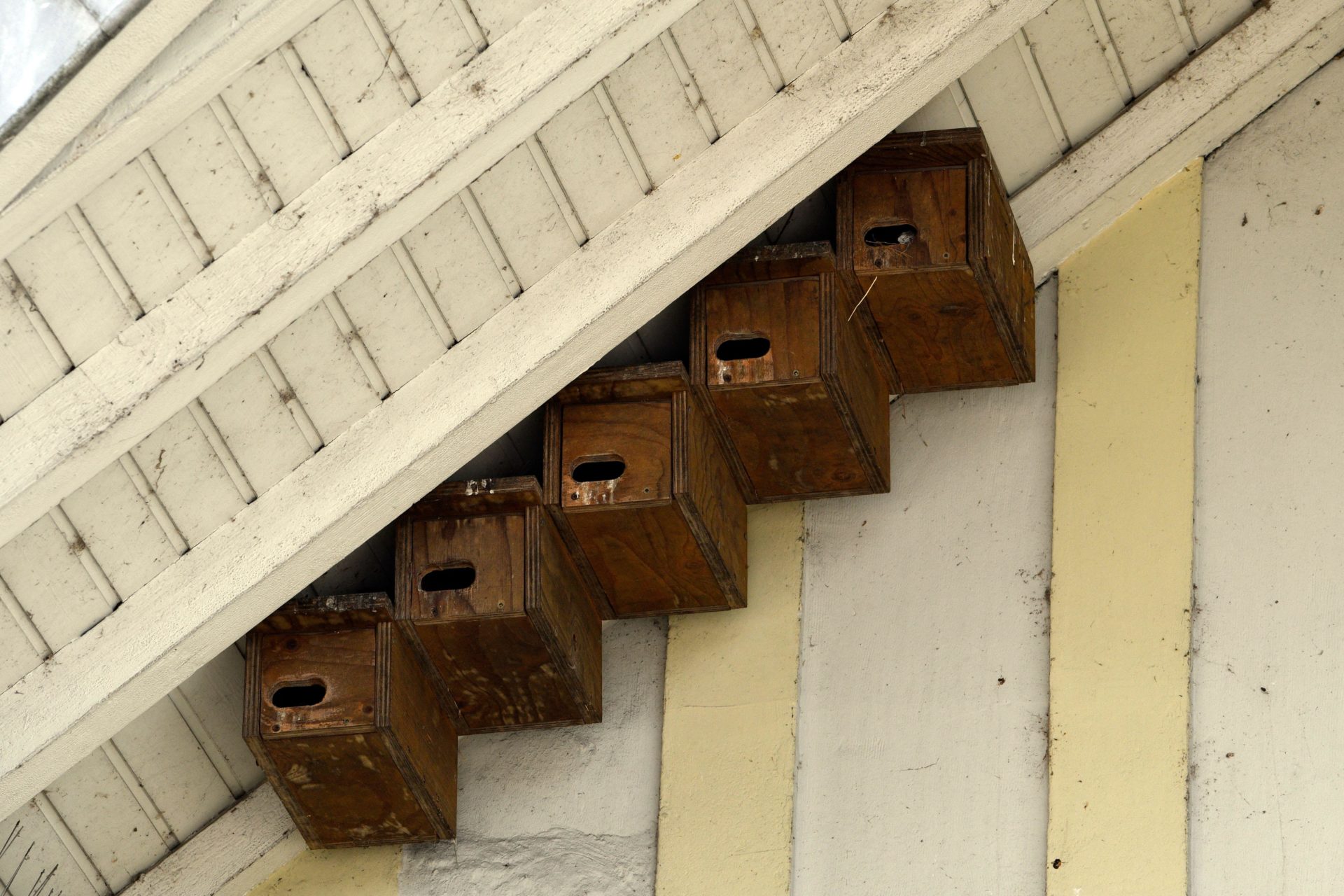 2H0C77C Common Swift (Apus apus) nest boxes installed under a roof overhang, Montbeliard, Doubs, France
2H0C77C Common Swift (Apus apus) nest boxes installed under a roof overhang, Montbeliard, Doubs, FranceIt is a model, Ms Huxley, believes that could easily be rolled out across the rest of the country and Swift Conservation is keen to help.
“By providing nest sites like I’ve done in Mayo, we can prove… that we can increase the population,” she said.
“I think other counties can see what we’ve done and we can help them achieve the same.”
A call to action
Last month, the Citizens’ Assembly on Biodiversity Loss published its final report and lambasted the State for having “comprehensively failed to adequately fund, implement and enforce existing national legislation, national policies, EU biodiversity-related laws and directives related to biodiversity.”
The decline of the swift was noted by the report and the authors urged the Government to take “prompt, decisive, and urgent action to address biodiversity loss and restoration”.
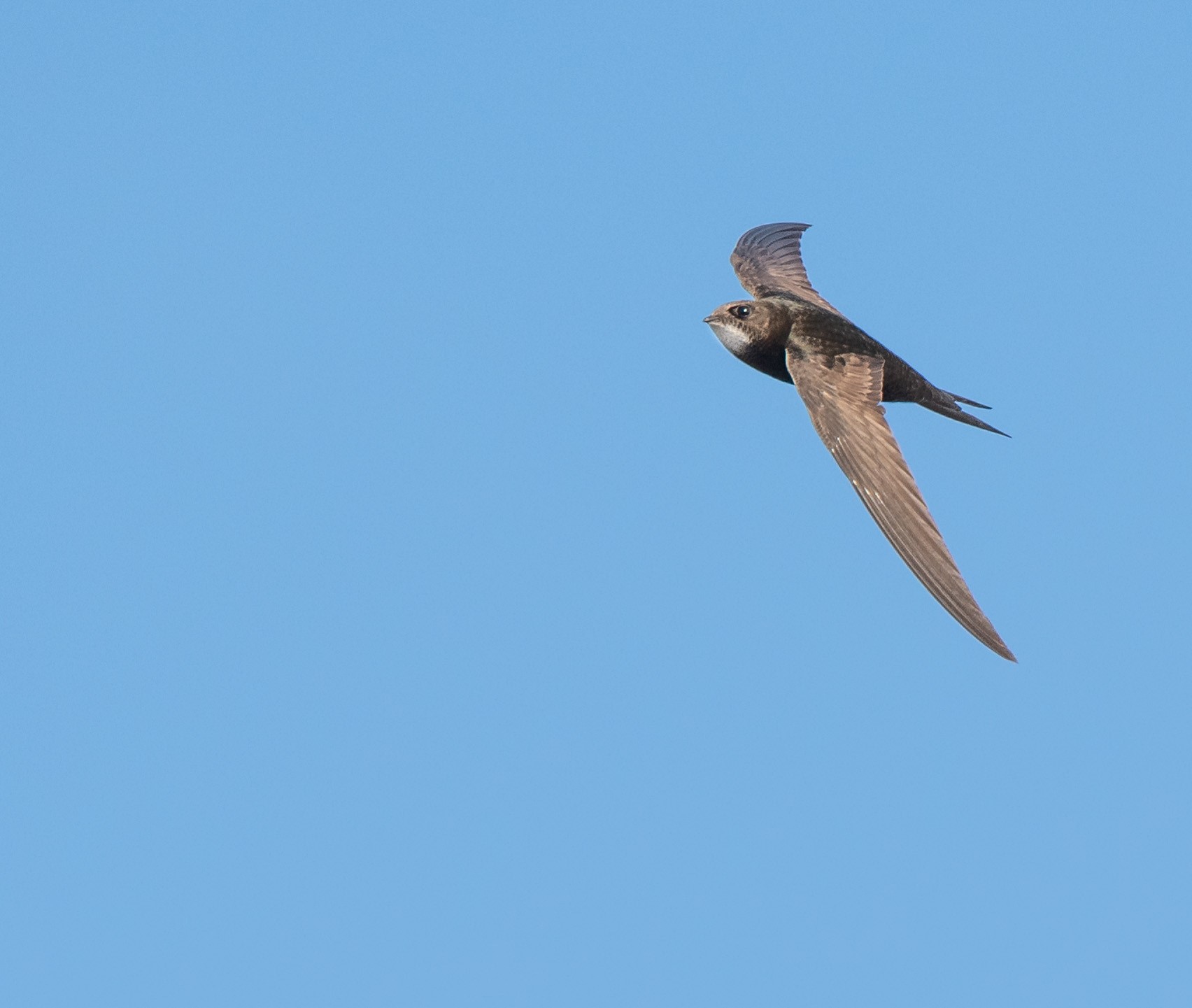
Of course, it is not just Governments and businesses that can help nature; David Attenborough once said, “The truth is, every one of us, no matter who we are or where we live, can and must play a part in restoring nature.”
Swift nest boxes can be bought online and are ideally installed on a property facing in a northerly, eastern or western direction - where chicks are shielded from the glaring summer sun.
Their installation might seem like a small thing to do but to a swift it might be the one place they find to nest and raise their offspring.
The extinction of the swift in Ireland is far from inevitable and, if there are concerted efforts, their screeching could once more become a common sound in Irish skies.
Main image: A swift. Picture by: Brenda Sheridan for Trinity College, Dublin.


